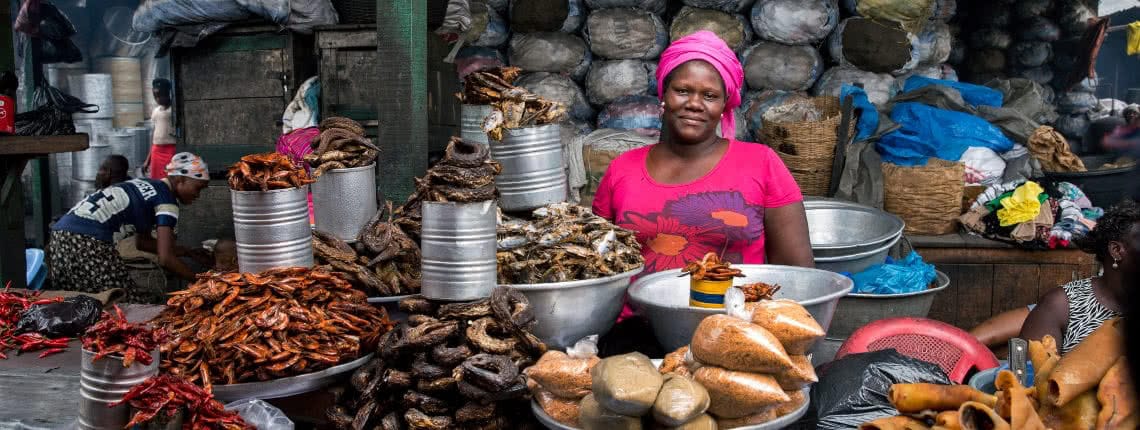The world is rapidly transforming and one of the biggest trends right now is the new world of work. But forget all the talk about a future of automation and robots. We’ve already reached a tipping point: 61 per cent of the world’s workforce is now informally employed. In 2020, we’ll be digging into what this means and how informal workers, particularly in developing countries, are impacting major issues, such as climate change, the future of work, political circumstances and the solidarity economy.
To follow along, we thought we’d pull five key publications from our archives that we think are essential to understanding informal work in the 21st century.
1) The Informal Economy: Definitions, Theories and Policies

By Martha Alter Chen
If you don’t know where to begin, start here. WIEGO’s Working Paper 1 provides all the fundamentals you need to know about the informal economy. It provides an important historical overview of the informal sector, and examines the linkages between the informal economy, formal firms, and formal regulations and the “formalize the informal economy” debate. The paper also proposes important policy responses.
2) Women and Men in the Informal Economy: A Statistical Picture 3rd edition

Wondering how we even know that the world’s workforce is now 61 per cent informal? This important document provides essential statistics.
WIEGO’s Statistics Programme has worked in collaboration with the International Labour Organization (ILO) in the development of statistics on the informal economy for many years. In 2018, this collaboration led to the ILO publication of the first-ever global estimates on the size of informal employment. The publication provides comparable estimates of the informal economy and its components for over 100 countries, including both developing and developed countries and both agricultural and non-agricultural labour.
3) Supporting Informal Livelihoods in Public Space: A Toolkit for Local Authorities

Photo: Sarah Orleans Reed
By Caroline Skinner, Jenna Harvey, Sarah Orleans Reed
With cities dominating today’s world, public spaces are increasingly becoming contested. And in many cities, informal workers who work in those spaces face hostile environments as they try to earn a living.
This toolkit is designed to assist city officials and other local authorities in adopting an inclusive approach to managing public space that considers the livelihood activities and needs of the urban informal workforce. The toolkit focuses primarily on street vendors, since available data suggests street vendors are the largest worker group whose livelihood depends on access to public space in many countries and cities worldwide.
4) Informal Economy Monitoring Study (IEMS)

Photo: Juan Arredondo/Getty Images Reportage
This landmark 10-city study on three continents offers great insight into the grounded reality of informal workers, including waste pickers, street/market traders and home-based workers. It looks at their contributions, challenges, and how governments and other players help and hinder their work. The study, led by WIEGO, was done in partnership with informal workers' organizations and uses qualitative and quantitative research methods to better understand how informal workers are affected by economic trends, urban policies and practices, value chain dynamics, and other economic and social forces.
5) Defining and Categorizing Organizations of Informal Workers in Developing and Developed Countries

Any discussion about the future of work needs to hear from the workers themselves about their challenges and needs. Workers globally have been organizing to bring greater voice and visibility to their circumstances. This organizing brief provides important information on the full range of organizational forms for voice and representation of informal workers. These organizations include formal union structures, associations, cooperatives, and global networks with goals ranging from collective bargaining to mutual aid or self help, and collective economic action.
Looking for more? Check out our all our publications and resources on the informal economy.
Feature photo: Informal vendor Monica Agyei sells dried fish, shrimp, meat products, and spices at her stall in Makola Market. Monica is one of the more than 2,000 members of the Makola Market Traders Union, an affiliate of the Ghana Trade Union Congress. Its main intervention activities include development projects in the market and negotiations with local and national government for better conditions for its members. Photo taken in Accra, Ghana. August 10, 2015 in Accra, Ghana. Photo by Jonathan Torgovnik/Getty Images Reportage
